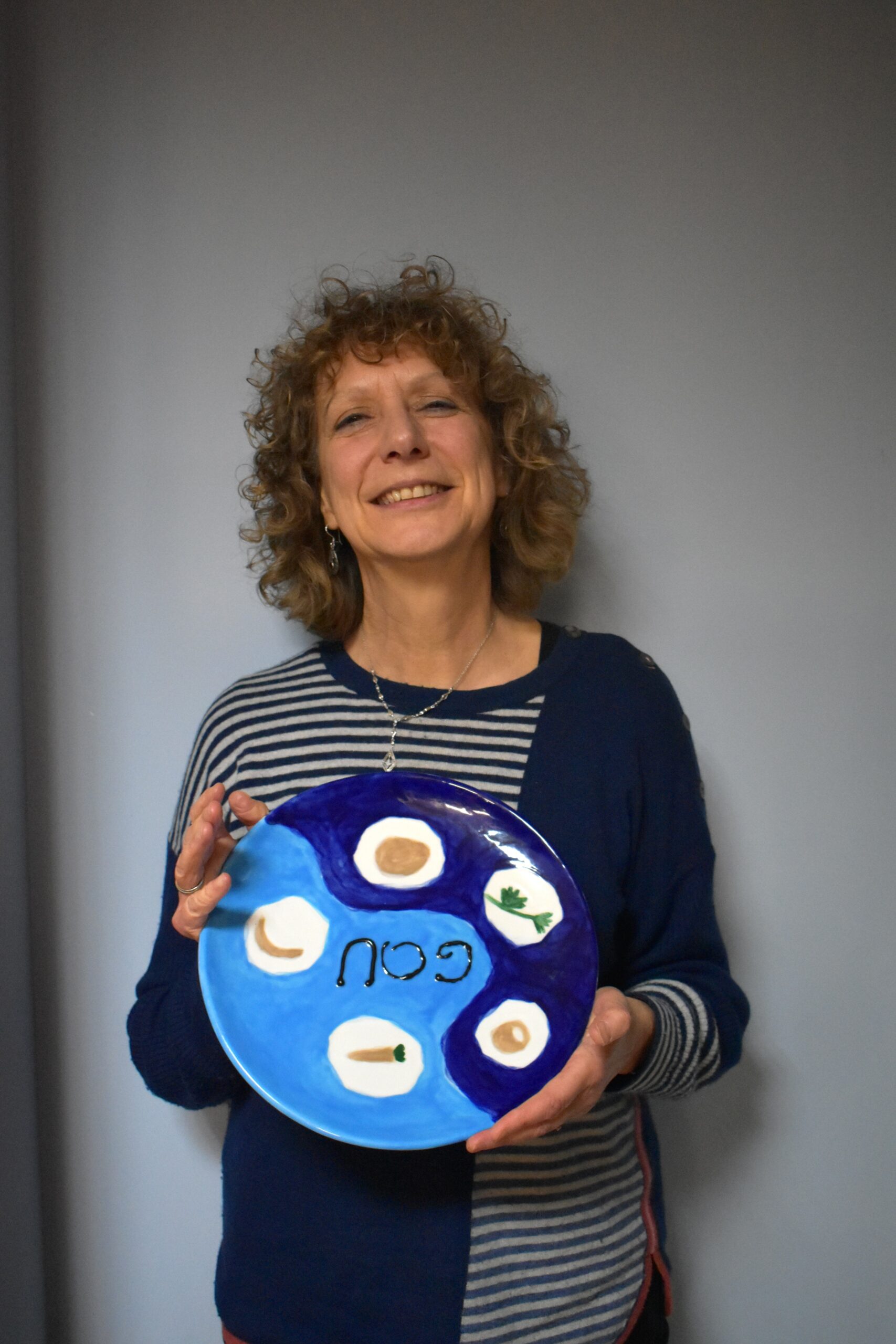Homemade Seder Plate
Object number
2023.17
Photographer
H. Singer
Donor
H. Singer
- Object Information
This is a homemade seder plate made by Helen Singer. She uses it every year during the festival of Passover. It commemorates the Exodus of the Jewish people from Egypt.
“Tell your child on that day: ‘This is because of what G-d did for me when I came out of Egypt.” (Exodus 13:8)
Seder is a festive meal and service, which takes place on the first (and sometimes also second) night of Passover. Various symbolic foods are eaten commemorating the Exodus and the Haggadah (a Jewish text that sets the order of the Seder meal) is recited.
Seder means ‘order’ in Hebrew. There is a specific order of the retelling the story of Exodus to remember the suffering and subsequent freedom of the Jewish slaves. The experience involves all senses. The liberation is heard, seen, smelt, felt, and tasted.
The seder plate is the centrepiece of the seder table. It traditionally consists of five to six items: a green vegetable (most often parsley), haroset (sweet fruit paste), bitter herbs (often horseradish), shank bone, and hard-boiled or roasted egg. The shank bone and egg are not eaten during the meal but are left on the plate. Each of them represents a part of the Passover story. In addition to the items on the Seder plate, there are also three pieces of matzah and a container of salt water or vinegar in which to dip the greens.
Karpas – a green vegetable, usually parsley represents the initial flourishing of the Jewish community in Egypt and the hope of new birth. It is dipped in salt water (Ashkenazi community custom) or vinegar (Sephardi custom), which symbolises the tears of the enslaved Jews.
Haroset – a sweet paste made of fruit, wine or honey, nuts, which represents the mortar used by the Jewish slaves to construct buildings for Pharaoh.
Maror – a bitter herb, often horseradish or bitter lettuce, is eaten to taste the bitterness of slavery.
Zeroa – a roasted lamb shank bone represents the lamb sacrificed at the special Passover offering when the Temple in Jerusalem. Vegetarians often use roasted beetroot as a substitute.
Beitzah – a roasted or hard-boiled egg, symbolises the special offering made in Jerusalem Temple. It also represents the cycle of life and hope for a new beginning after difficult times.The contemporary Jews may add other items, for example, an orange to the plate to represent current liberation struggles.
- Hear from the donor
Briefly describe your chosen image
I made this seder plate at Pots of Art.
Why is this image important to you?
We use this every Passover, so it reminds me of my family traditions.
In three words, what does Judaism mean to you?
Continuity, Link with past, Community
- Download image
Please provide the following information in order to download this image. You'll only have to do this once.
